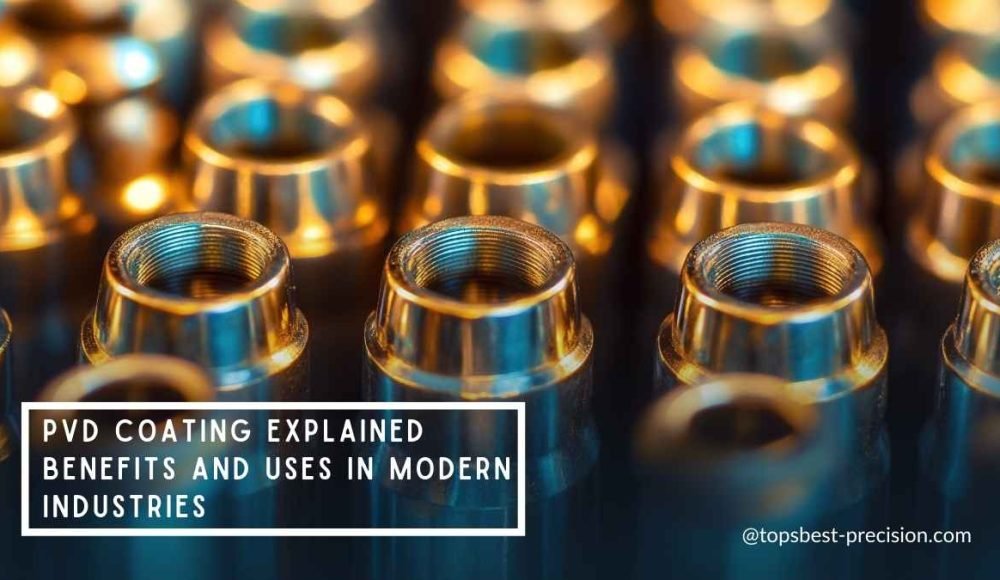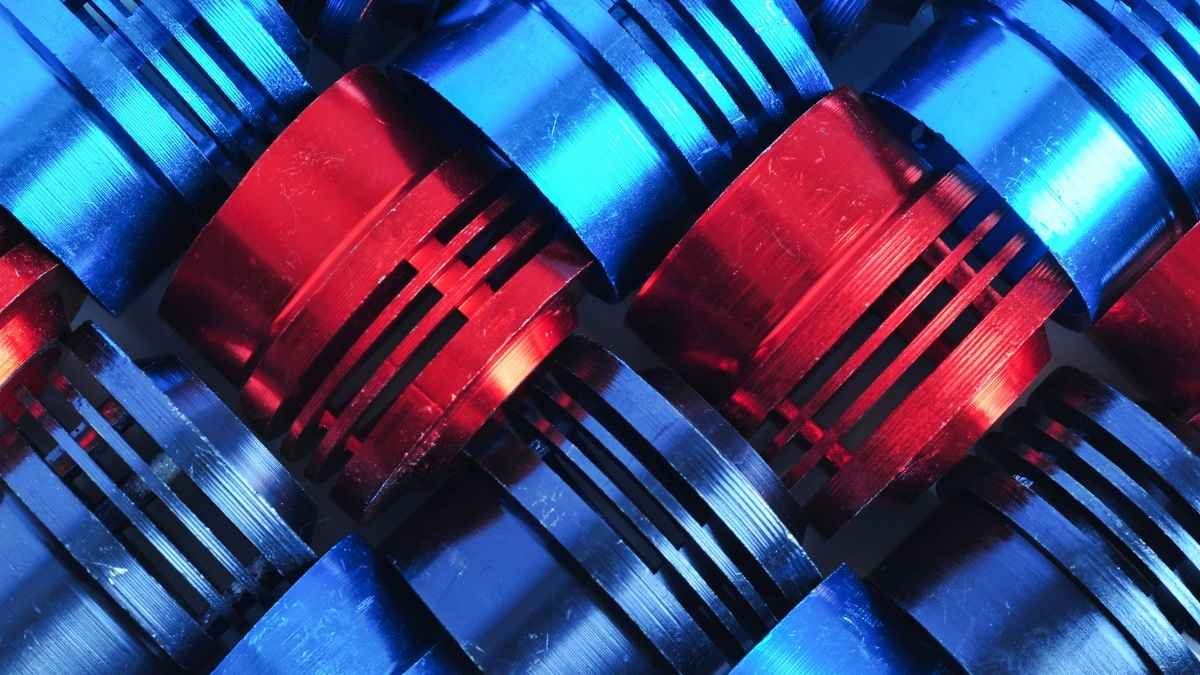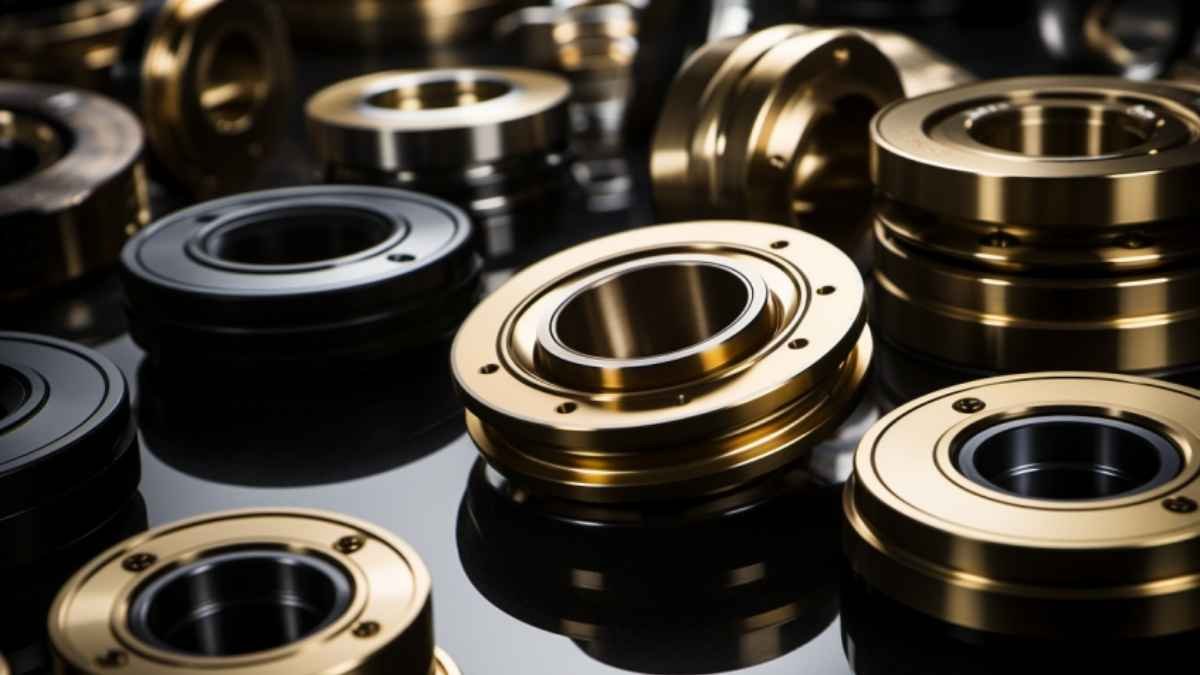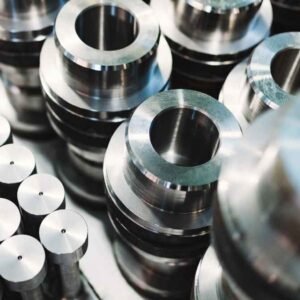PVD coating is an ultramodern surface treatment method. It involves applying thin and hard films on various substrates through vapor phase processes. Generally, PVD helps improve surface features such as hardness, wear, and corrosion for the surface being treated. PVD coatings are applied in the automotive, aerospace, and medical industries for the functionality and durability of many components. The process is normally conducted in vacuum chambers. In addition, it provides precise control over coating thickness and material properties, so high-quality results can be obtained for specific applications.
What is PVD Coating? The Basic Principles
PVD coating is a finishing technique where condensable materials in the solid phase are converted into the gaseous phase. This gas then condenses on the surface of a target material and forms a thin association of solids. It occurs in a vacuum chamber to maintain the accuracy and purity of the process.
This coating increases the properties of materials on their surface like hardness, corrosion, and wear resistance. It frequently employs metal, ceramic, or alloy as the substance of the coat layer. PVD coating has several benefits such as high endurance and elevated performance. Moreover, it also allows the manufacturer to design coats depending on the needs. Such coatings are widely applied in high-temperature tools, car components, and the manufacturing of medical instruments.
PVD Processes in the Industry
The process steps involved in the PVD Coating Process includes:
1. Material Selection
First of all, there is a choice of materials for a coating. Metals and alloys are chosen based on material properties: ceramics may also be selected in some instances. This property should preferably provide the needed features such as hardness, corrosion as well as thermal stability.
2. Surface Preparation
Before the application of the coating, the substrate material has to be prepared by cleaning. It has to narrow down its cleaning process to remove the contaminants, oil, and oxides so that the surface can adhere tightly. The methods to prepare the surface for deposition include ultrasonic cleaning of the sample or plasma cleaning.
3. Vacuum Chamber Setup
Then the material is placed in a vacuum chamber where the pressure of the gas is reduced usually to a low range. Environmental conditions such as vacuuming should not be contaminated to ensure accuracy regarding deposition. Temperature and pressure conditioning is when only specific temperature and pressure can be introduced throughout the process in a chamber.
4. Vaporization
In vaporization, the coating material is subjected to heat and it transforms to vapor/gas form. These techniques like sputtering or thermal evaporation are normally used to alter phases. Then, the vapors are transported through the vacuum chamber to the substrate side, for deposition.
5. Deposition
The material is deposited layer by layer and when hot, it turns into a gas and reforms a thin layer when it is cooled. As compared to other similar coatings suitable for composite materials, this coating is relatively uniform with no blistering and no space between the substrate and the coating surface. The physical thickness of the coat and the considerable characteristics that accompany it can be controlled by the deposition rate and the temperature.
6. Cooling
The next process after deposition is a slow cooling down of the overall coated material. This means that the control of this cooling process assists in the elimination of issues such as cracking. Furthermore, it reduces the temperature of the substrate solidifies the coating system, and makes the deposited thin film strong.
7. Quality Inspection
Last of all, the coated material is subject to extreme scrutiny and manual examination. Manufacturers evaluate the coating thickness, uniformity, and adhesion areas frequently. Sophisticated methods such as Scanning Electron Microscopy/Sem, Transmission Electron Microscopy/TEM, or X-ray diffraction analysis are employed to assess the quality of a coating and to guarantee an appropriate quality of the final coating as per industry specifications.
Advantages of PVD Coatings
Here are the unique benefits of PVD Coating:
1. Improved Wear Resistance
PVD coatings improve wear resistance by depositing a hard and strong surface layer. Due to the deposited thin layers created during the PVD process, it is possible to minimize friction and protect the workpiece surface. Especially, it’s quite helpful in markets such as aerospace or automotive because components of related equipment undergo significant wear and tear. In addition, it makes parts have a longer life and performs excellently under conditions that where degrade ordinary parts.
2. Corrosion Resistance
PVD coatings prove to be the best when it comes to protecting the surface from corrosion. The thin continuous film of material provides a barrier layer that shields substrate materials from moisture, chemicals, and salt. Particularly, it’s beneficial for parts typically produced for use in severe conditions including automobiles and industries. Because, here parts of a device will likely be exposed to corrosive conditions, and the device should operate for long periods.
3. Parts Aesthetics
In addition to performance advantages, PVD coatings signify the aesthetics of the finished product. The PVD coatings come in a wide range of colors, surface finishes, and textures to give a luxurious appearance. It is especially useful in durable consumer products such as electronics, jewelry, and auto spare parts and accessories. Thus, it becomes easier for manufacturers to add value to their product surfaces to produce stunning products while keeping them useful and long-lasting, simultaneously.
4. Environmental Benefits
PVD coatings are a considerably more favorable approach to a coating than traditional systems. PVD performance is superior to chemical processes, which employ poisonous solvents, and produce hazardous residuals, as the PVD involves physical vapor deposition. The process is safer, due to the lack of hazardous chemical use and complies with strict standards for environmental conditions. PVD helps make sustainable manufacturing practices. Therefore, companies that adopt PVD practices are environmentally friendly.
5. Customization and Precision
PVD Coating allows you to select specific characteristics. Several attributes of the polymer can be varied including the thickness, the material hardness, and color. Moreover, it enables the achievement of the best levels of performance and durability, thereby increasing the quality of the final product. From tools to automobiles to medical equipment, PVD coatings provide customized and efficient solutions that truly count.
Industries That Benefiting from the PVD Coating Process
Let’s take a look at manufacturing industries that benefit from PVD Coating Process:
1. Automotive Industry
The PVD coatings improve product durability and wear protection of engine components, maximizing the part’s lifetime. PVD-coated brake pads entail improved friction coefficient. For the transmission parts, the benefits include decreased wear-and-tear, together with corrosion resistance. Auto exterior trim receives a stylish as well as a tough coating through PVD. PVD-coated wheels do not scratch easily and provide a high luster finish. In addition, PVD coatings improve the strength of substances that make up the fuel systems including fuel injectors.
2. Aerospace Industry
In Aerospace applications, the turbine blades coated with PVD are not subjected to high-temperature wear. PVD coatings justify their application to landing gear by improving the product’s fatigue resistance. Bearings and seals also get safeguarded from friction and corrosion. The PVD coatings further ameliorate fuel economy by minimizing rubbing in engines. Aerospace PVD-coated parts that are typically subjected to weathering also remain tough and non-corroded.
3. Medical Industry
PVD-coated instruments used in medical procedures do not corrode and wear because PVD serves as an effective barrier. Orthopedic implants comprise a higher biocompatibility. PVD coatings also cause no degradative effect on the medical devices used in the body fluids. Moreover, dental tools and implants stay longer and have a lower chance of getting contaminated. In addition, PVD coatings improve the lifespan of pacemaker parts and instruments used in surgeries.
4. Electronics Industry
In the casings of smartphones, PVD makes the surface not easily scratched and has a good look. Higher performance of connectors and switches is achieved by the application of PVD coatings. PVD improves the reliability of mechanical wear-vulnerable electronic components. Antiswipe and anti-scratch coatings safeguard the screen of mobile phones. Furthermore, PVD also adds the aesthetics of wearables and other electronic devices.
5. Tool and Manufacturing Industry
PVD provides the improvement of the hardness and wear resistance of cutting tools. Manufacturing employs molds and dies that do not wear out because of PVD coatings. In heat processes, stability at the high-temperature level is an advantage for related tools. Drill coatings and CNC tools utilize lower wear during the precision machining operation. Compared to PVD, the injection molds have a longer service life in case of using PVD, thereby increasing production rates.
6. Jewelry & Luxury Goods Industry
PVD coatings offer glamour, and anti-scratch coatings to jewellery. The feature of buying watches and luxury accessories retains a hard, gorgeous look through PVD. Antiquing or glossing adds distinction to luxury items; luxury products come in different finishes. Rings and bracelets with PVD coatings are less worn out and faded. The use of luxurious products does not need re-coating frequently as they have a good appearance for a longer period.
7. Energy and Power Generation
Power plant parts are shielded against corrosion and wear by PVD coatings. Many parts of a wind turbine if coated with PVD are inclined to have longer service duration especially when environmental forces are at play. Connectors used on solar panels are characterized by corrosion and results to improved energy. PVD-coated gas turbine blades have features of high temperature and oxidation resistance.
Summing Up
PVD coatings give enormous advantages across industries, and many businesses demand product aesthetics extensively. In automotive, they improve wear resistance and appearance. The main areas of improvement are improved durability and protection against corrosion affecting aerospace components. In the medical area, it enhances the life cycle and performance of implants and surgery instruments. The electronics industry implemented PVD for enhanced durability and smooth surface looks.
In tooling and manufacturing, PVD coatings reduce the wear off of cutting tools and mold. The jewelry industry needs resistant coatings, and when these are long-lasting, and scratch-resistant is a bonus. In energy and power generation, for instance, PVD prevents the formation of wear and corrosion on parts and components. Finally, in defense and military applications VD coatings guarantee that equipment is properly protected and will operate effectively in harsh environments.







1 thought on “PVD Coating Explained: Benefits and Uses In Modern Industries”